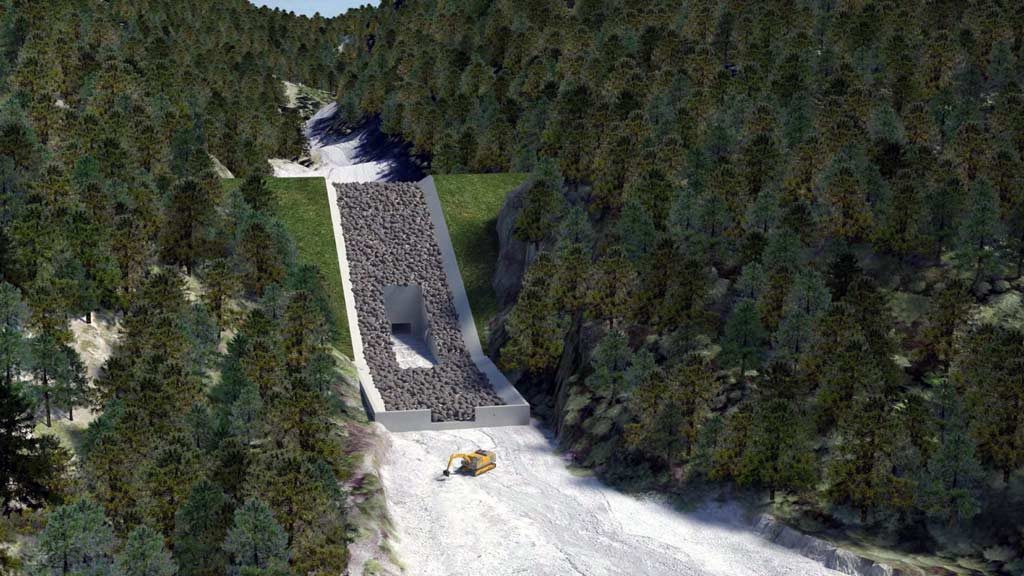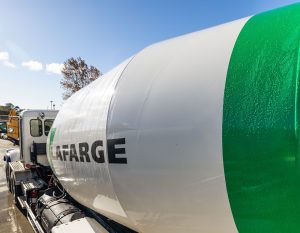Earthmoving equipment is being brought in and tree clearing is set to begin for construction of a 34-metre-tall, rock-filled embankment dam on Cougar Creek in Canmore, Alta.
The long-awaited, $48.8-million flood-retention structure will be located about two kilometres northeast of the Trans-Canada Highway, and take roughly two years to build. The damn is being built to protect the town and critical infrastructure from devastating flood damage like that which occurred seven years ago.
“This project is necessary to prevent the type of damage we saw in 2013 and to provide protection from the much larger floods we now understand can happen along Cougar Creek,” explained Canmore Mayor John Borrowman.
“This area is prone to dangerous debris floods, as well as landslide dam outbreak floods, that can cause tens of millions of dollars in damage, disrupt the Trans-Canada Highway and CP rail line, and put many lives at risk.”
In 2013, the town experienced severe flooding when rivers and streams in the Bow Valley rose rapidly, causing devastating destruction of homes, businesses and infrastructure. Some 44 houses were extensively damaged when material from the mountains flowed into Cougar Creek and it became a debris-choked river.
“We’re looking forward to having this protection in place,” Borrowman said. “A large proportion of our community will rely on this structure for protection for their homes and business. And, it will bring certainty that the Trans-Canada Highway and CP rail lines can remain open at this location the next time we see a flood like the one we experienced in 2013.”
The province is providing $30.3 million for the project, while the federal government is providing $14.5 million. The town is kicking in $4 million and is also responsible for operating costs and maintenance.
The project will be tendered in the coming weeks. Construction is expected to be finished in spring 2022.
The dam will offer critical protection against the public safety threat posed by debris floods along steep mountain creeks. In addition to the Trans-Canada Highway, it will protect a school and RCMP detachment, electrical transmission lines and high-pressure natural gas pipeline.
During high rainfall events, the dam will create an inundation area that temporarily holds up to 760,000 cubic metres of water and wood and rock debris. During normal conditions, water and smaller-sized wood material and sediment will flow unimpeded through the structure’s diversion tunnel.
The structure itself will be an earthen dam with a rock-cut spillway and concrete and steel pipe low-level outlet.
Borrowman said contractors will face several obstacles related to digging as well as re-routing the creek while work is being done.
“Deep foundation work will be a challenge,” he said. “We’re working in a constrained area with flowing water and will dig up to 10 metres into the channel to create a foundation on bedrock. This phase of the work requires dewatering and re-routing the creek flow past the construction area. To complete this work we will construct a bypass channel.
Drilling, blasting, and rock stabilization are other challenges that will have to be managed by the contractors.
The dam has been a long time coming. It was originally approved by the Natural Resources Conservation Board (NRCB) in November 2018, but prior to official authorization the town decided to revise the project’s design to shorten the construction schedule and reduce costs, so the NRCB suspended its decision and requested the town file a revised application.
The town filed a revised application on Sept. 6, 2019, identifying design changes to the structure, the spillway and the access road, and assessing the impacts to social, economic, and environmental indicators resulting from the revised project design. The NRCB accepted the revised design last October, concluding that the dam will protect public safety, property, and infrastructure and has no unacceptable environmental impacts.
As part of the approval, the town will be required to allow First Nations to hold a pre-construction ceremony, and to harvest traditional plants in the area. Water quality and quantity monitoring also must be done during construction.
While it’s taken some time to get the necessary approvals for the project, Borrowman said it’s understandable as the dam is a project of firsts.
“This is the first steep creek to have been studied for debris flood, debris flow, and landslide dam outbreak flood hazards to this extent in Alberta. The work required an in-depth study of the catchment and alluvial fan where the community has developed.”
Borrowman added it is also the first risk-based process to consider options based on a full range of life-loss and economic risk criteria for such a hazard in the province.











Recent Comments
comments for this post are closed